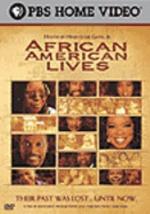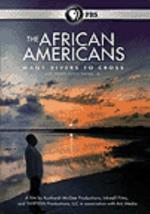February 22, 2016 | SuzyQ
A compelling combination of storytelling and science, this series uses genealogy, oral histories, family stories and DNA to trace roots of several accomplished African Americans down through American history and back to Africa.
Explore with Professor Henry Louis Gates, Jr., the evolution of the African-American people, as well as the multiplicity of cultural institutions, political strategies, and religious and social perspectives they developed - forging their own history, culture and society against unimaginable odds.
Explores the life and career of tennis player Althea Gibson, who overcame obstacles in the highly segregated tennis world of the 1950s.
Examines the photography, poetry, writing, music and life of Gordon Parks.
An intimate and heart-warming look at the man behind the legend as we've never seen Ali before. The documentary is told through exclusive, unprecedented access to Ali's personal archive of voice recordings combined with touching interviews and testimonials from his inner circle of family and friends, including his daughters, son, ex-wife and brother, plus legends of the boxing community including Mike Tyson, George Foreman and Gene Kilroy.
Pays tribute to the many topflight players from the Negro Leagues. Narrated by actor Paul Winfield, the program documents a bygone bittersweet era in baseball and the men who were denied stardom by the color line.
The Powerbroker tells the story of Whitney Young, who biographer Nancy Weiss Malkiel called 'the inside man of the black revolution." A social worker who became the executive director of the National Urban League from 1961 to his death in 1971, he was denigrated by black power advocates, but by challenging America's business and political communities directly, Young was able to make in-roads where other civil rights leader could not.
The 200 year history and evolution of gospel through its many musical styles: the spirituals and early hymns, the four-part harmony-based quartets, the integration of blues and swing, the emergence of soul, and the blending of rap and hip-hop elements, walking in step with the history of African-American culture.
Explores the powerful role that music played in the struggle for freedom during the Civil Rights era.
Inspired by Deborah Willis's book, Reflections in black, this film casts a broad net that begins with filmmaker Thomas Allen Harris's family album. It considers the difference between black photographers who use the camera to define themselves, their people, and their culture and some white photographers who, historically, have demeaned African-Americans through racist imagery. The film embraces both historical material (African-Americans who were slaves, who fought in the Civil War, were victims of lynchings, or were pivotal in the Civil Rights Movement) and contemporary images made by such luminaries as Roy DeCarava, Gordon Parks, and Carrie Mae Weems. The film is a cornucopia of Americana that reveals deeply disturbing truths about the history of race relations while expressing joyous, life-affirming sentiments about the ability of artists and amateurs alike to assert their identity through the photographic lens.
When the Civil War ended in 1865, more than 4 million slaves were set free. By the late 1930's, 100,000 former slaves were still alive. In the midst of the Great Depression, journalists and writers traveled the country to record the memories of the last generation of African-Americans born into bondage. Over 2,000 interviews were transcribed as spoken, in the vernacular of the time, to form a unique historical record.
On August 20, 1972, more than 100,000 people attended a concert that came to be known as 'the Black Woodstock." Staged in Los Angeles, California, it was in part a response to Watts Riot of 1965. Wattstax documents this historic event and includes the once-lost original ending.
This video examines the American Civil Rights Movement from the perspective of African-American churches. These churches provided moral and spiritual support as well as being critical and strategic centers for the movement.











